Have you ever wondered how deep the is the ocean at its deepest point? Although the ocean floor is not flat, the deepest documented location is 11,033 meters.
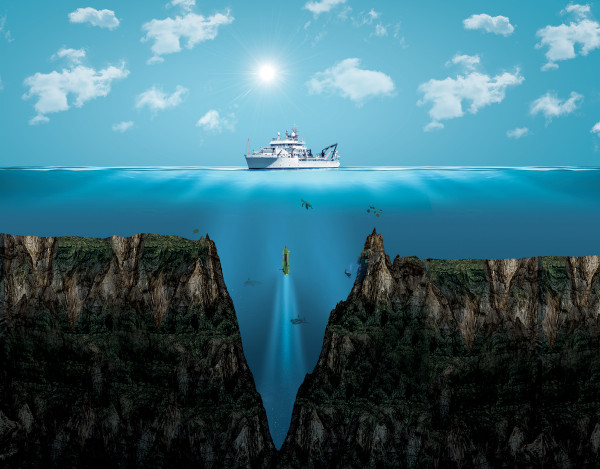
In this article we show you an animation that will help you understand the depth of the ocean and interesting facts about the deepest points found and where they are.
Today, the average depth of the ocean is estimated to be 2.32 miles.
However, due to the vastness of the ocean, it might be hard to imagine how deep it is.
For this reason, the following animation by Rob Ludacer for Tech Insider helps us to understand better, through different comparisons.
The first person to calculate the average depth of the ocean was the French scientist Pierre Simon Laplace. By observing the tides he was able to estimate the average depth at 3,962m or 2.46 miles.
Oceans cover 71% of the Earth’s surface, with the Pacific Ocean being the largest.
This animation puts the actual distance into perspective, showing a vast distance between the waves we see and the mysterious point called Challenger Deep.
What is the deepest ocean trench?
Ocean expedition has always been a captivating journey into the unknown.
Near the island of Guam, north of the Philippines, is the Mariana Trench. It has a documented depth of 11,033 meters and is known as the deepest place in the ocean.
The trench also has a length of 2,542 meters, which makes it one of the largest trenches on the planet.
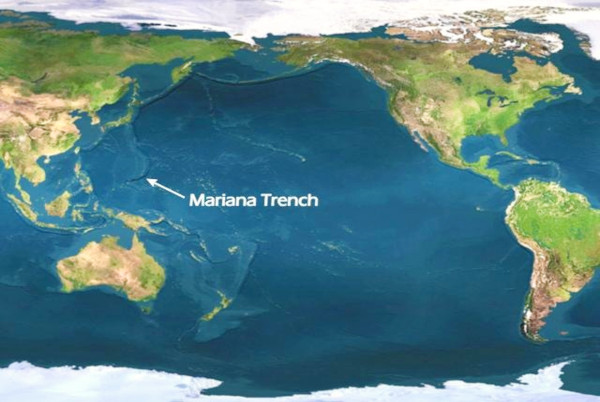
Just to get a better idea of how deep the Marianas’ trench is, it’s enough to note that its 11 kilometers below sea level, exceeding the altitude of Mount Everest by more than 2 thousand meters, the highest elevation above the sea level.
The seabed is as complex and interesting as the ground and the elevations of the earth’s surface. At the bottom of the ocean we find seamounts, valleys, plateaus, mountain chains and even active volcanoes.
The eruption of underwater volcanoes is one of the most impressive and interesting natural phenomena in the world.
So, what is the Challenger Deep?
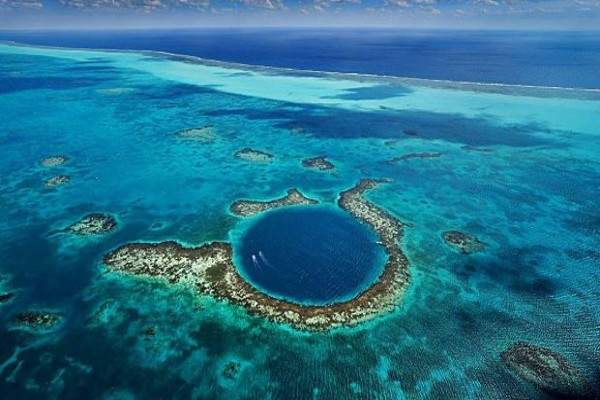
Challenger Deep is the lowest point on the Earth’s crust. Located within the already-deep Mariana Trench in the western Pacific Ocean.
The actual deepness of Challenger Deep strains the imagination.The location is at the southern end of the Mariana Trench.
It is around 11,000 meters deep. It is known by that name because the HMS Challenger was the first ship from which the first survey of the depths of this pit was made in 1875.
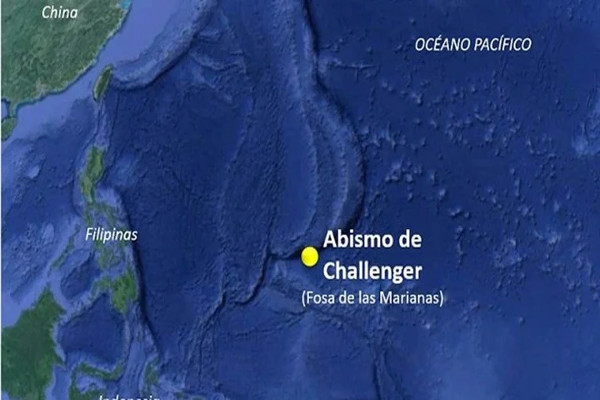
The 5 deepest points of the oceans
Although the Mariana Trench continues to be the deepest point in the ocean, it’s actually not the only one. An expedition organized in 2018 by a group of scientists in a mission called the Five Deeps Expedition, confirmed the 5 deepest points in the ocean. The results of the research were published in the scientific journal Geoscience Data Journal and we summarize them here.
| Rank | Trench Name | Deep Name | Depth in meters | Depth in Feets | Ocean |
|---|---|---|---|---|---|
| 1 | Mariana Trench | Challenger Deep | 10924 | 35840 | Pacific Ocean |
| 2 | Puerto Rico Trench | Browson Deep | 8378 | 27487 | Atlantic Ocean |
| 3 | South Sandwich Trench | Factorian Deep | 7432 | 24383 | Southern Ocean |
| 4 | Java Trench | Unnamed | 7187 | 23579 | Indian Ocean |
| 5 | Unnamed | Molloy Hole | 5581 | 18310 | Artic Ocean |
How deep in the ocean can humans go? (Video)
It depends on the technology. The deepest point man has reached using scuba gear is 332m. This deep diving world record was held by the Egyptian Ahmed Gabr in 2014.
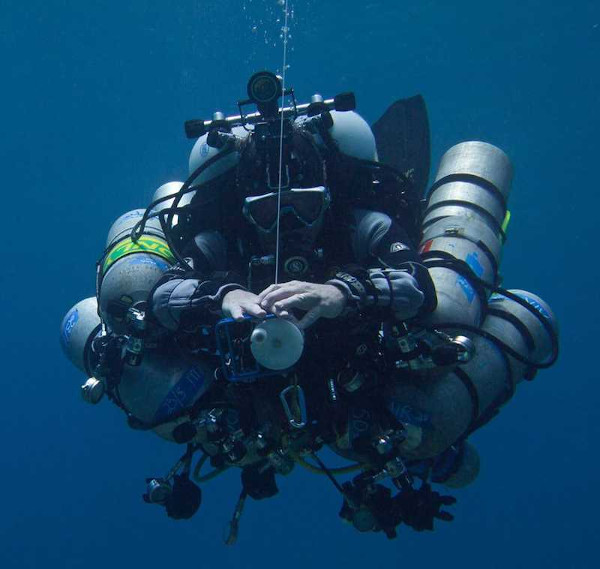
However, with the help of a specialized submersible, the man has managed to descend to the deepest point in the sea.
This feat was accomplished by Victor Vescovo in 2018. This short 2 minute video summarizes the details of the expedition.
Just how Deep does the ocean is?
Let’s take an underwater trip and see what we find.
Blue Whale feeding at 330 ft deep
They, the blue whales, usually hunt at depths of around 330 feet within the well lit zone of the ocean.
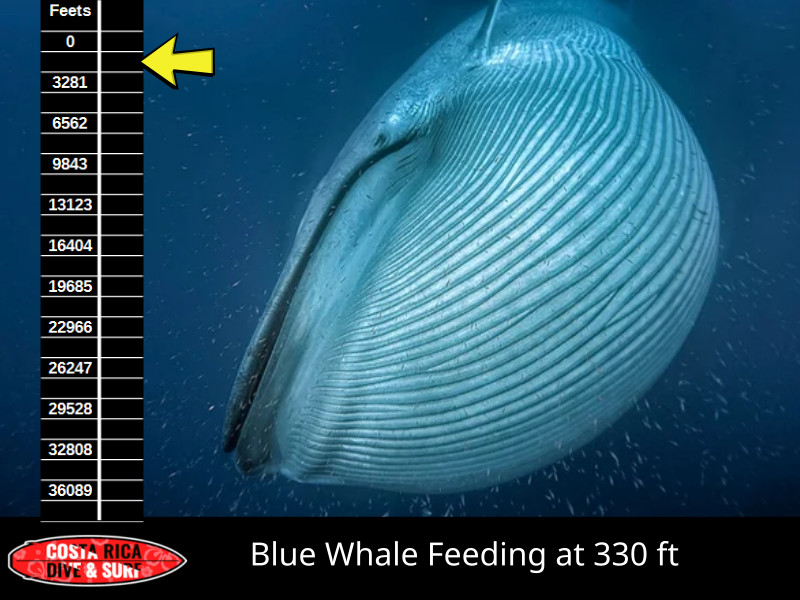
Tritón US submarine at 700 feet
Deeper down, at 700 feet, the USS Triton became the first submarine to circumnavigate the Earth in 1960.
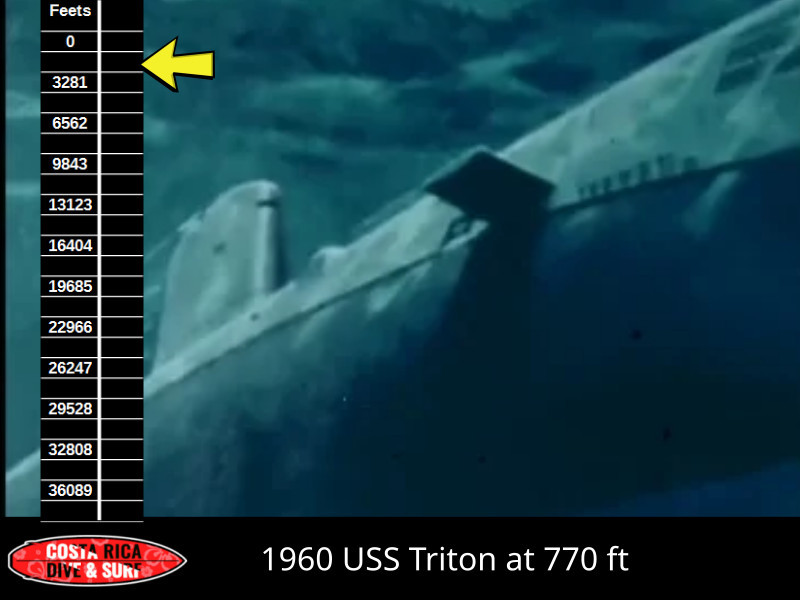
Deepest free-dive recorded-Ocean depth: 831 ft
At 831 feet, we reach the deepest free-dive in recorded history. Down here, the pressure is 26 times greater than at the surface wich would cruch most human lungs. But whale manage it diving to a max depth of 1640 feet where they hunt giant squid.
Ocean depth: 2400 ft
At 2400 feet, we reach the danger zone for modern nuclear attack submarines any deeper the submarine´s hull would implode.
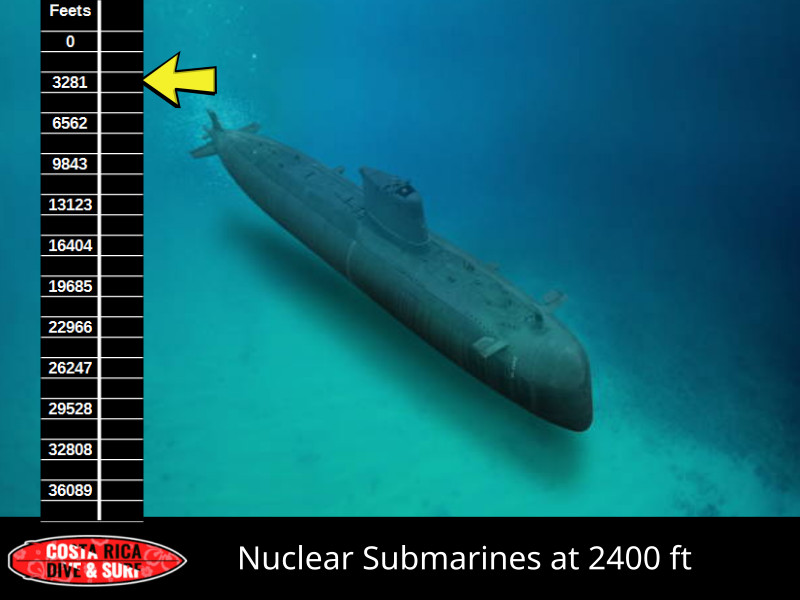
Ocean depth: 2722 ft
2722 feet down is where the tip of the worlds tallest building, the Burj Khalifa would reach.
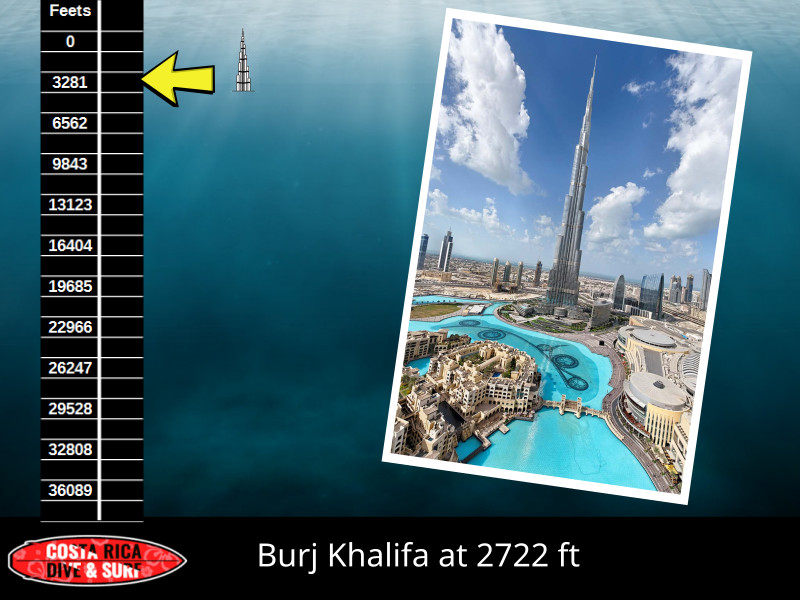
Not sunlight-Ocean depth: 3280 ft
A little farther, at 3280 feet, we´re deep enough that sunlight can´t reach us.
We have now entered the midnight zone.
The midnight zone.
Many animals down here can´t see, like these eyeless shrimp at 7500 feet who thrive near scalding hot,undereater volcanoes.
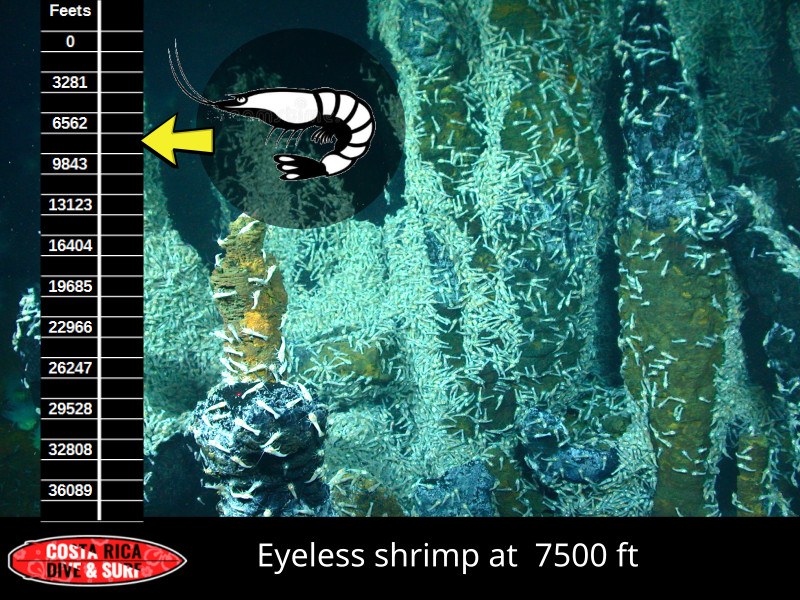
At this depth temperatures are just a few degrees above freezing, but the waters around hydrothermal vents can heat up to 800 degrees F°.
9816 feet is the deepest any mammal has been recorded swimming. The Cuvier beaked whale.
But not even the Cuvier beaked whale could explore the RMS Titanic wich rests at a staggering depth of 12500 feet.
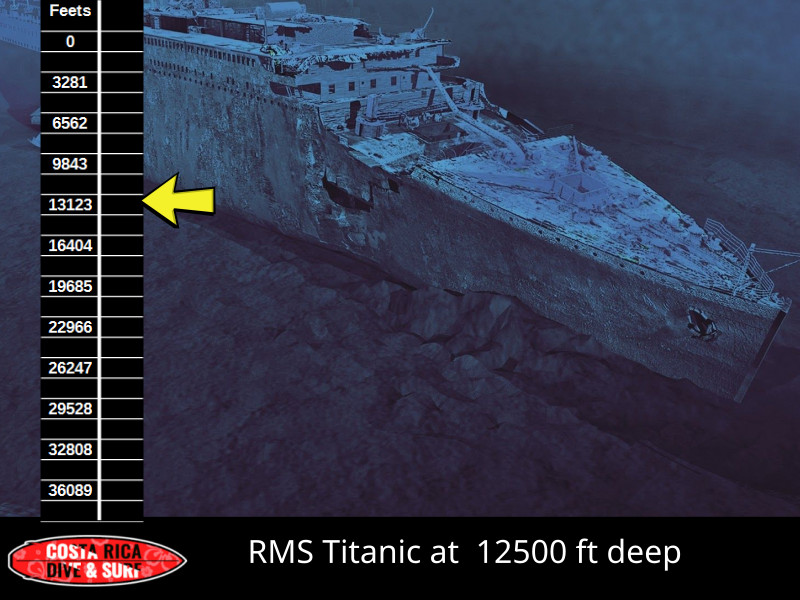
The pressure is now 378 times greater than at the surface.
Yet you can still find sea life like fangtooth, hagfish and Dumbo octopus, the deepest living octopus on Earth.
Ocean depth: 20.000 ft
AT 20.000 feets is the Hadal Zone- an area designated for the oceans deepest trenches, like the Mariana Trench.
If you tipped Mt Everest into the Mariana Trench its summit would reach down to 29029 feet.
That still doesn´t compare to the two deepest crewed missions in history.
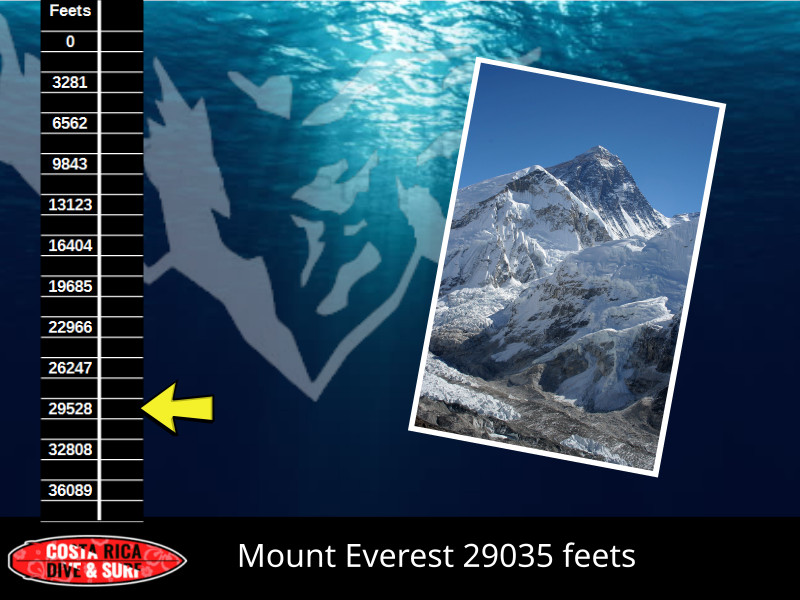
The conquest of James Cameron-Ocean depth: 35.756 ft
In 2012, director James Cameron descended to 35.756 feet, for the Deep Sea Challenger Mission.
But scientists estimate that there are potentially miles of marine species that we have yet to discover. Humans have explored an estimated 5-10% of the Earth’s oceans. We have only just begun to understand the deep and dark world that flows below us.
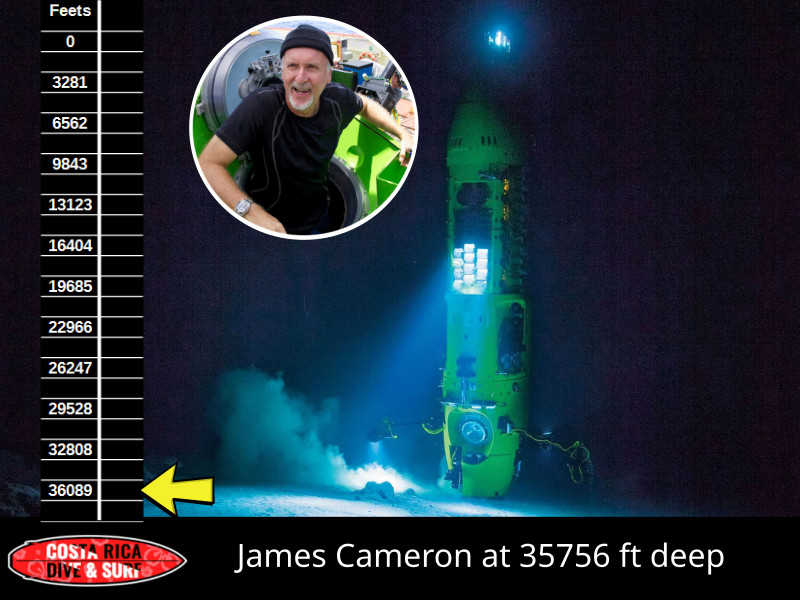
The lowest Point on Earth-Ocean depth: 35.797 ft
But Cameron didn´t quite break the record, which was set by oceanographer Jacques Piccard and Lt. Don Walsh in 1960. Piccard and Walsh descended to the lowest point on Earth, Challenger Deep, at a record of 35.797 feet below the surface.
Since then, scientist have sent half a dozen unmanned submersibles to explore Challenger Deep, including Kaiko, wich collected over 350 species off the seafloor between 1995-2003.
Is there life deep in the ocean?
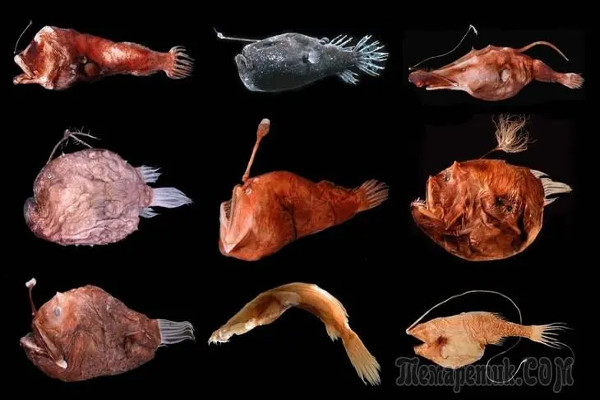
In the depths of the sea, the water temperature is lower due to the dispersion of solar energy. At 3,000 meters sunlight disappears completely, so imagine how dark the Mariana trench should be. At such depths due to the lack of light and heat, combined with the enormous water pressure evolution and development of life is nearly impossible.
However, there is evidence that it does exist and has evolved successfully. Most sea animals of these depths have no eyes. Also, the density of their bodies is too low to withstand the pressure exerted by the body of water.
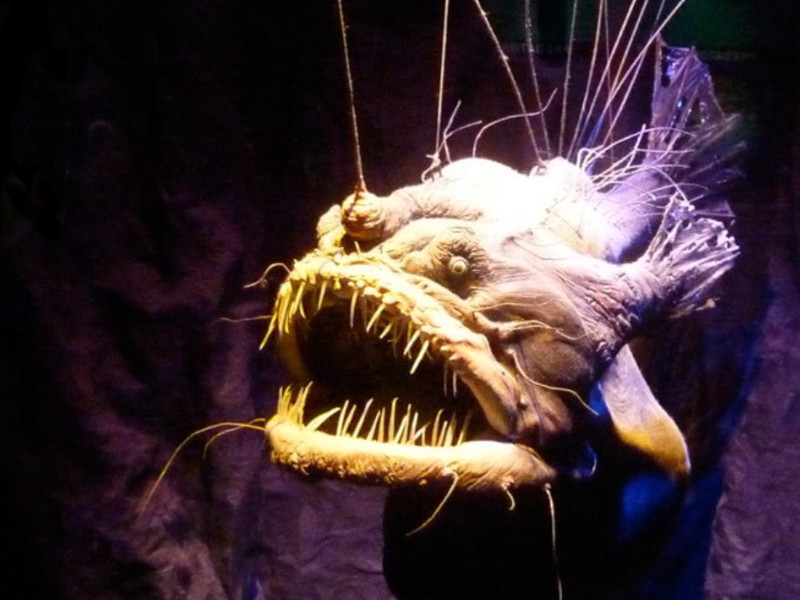
What other animals live in deepest area?
Even though the Mariana Trench is compellingly deep, we cannot rule out that deeper places may exist.
The pressure level there is 110 Megapascals, the equivalent of 1,000,000 pascals.
No animal on the surface could withstand this kind of pressure.
In these areas live bacteria that live thanks to metabolizing hydrogen and methane that are released by rocks and water.
These are some of the species:
- Hadal amphipods 10,320 meters
- Brotula fish 8360 meters
- Fish Pseudoliparis amblystomopsis 8175 meters
- Ctenophores 7215 meters
- Sea lice 6895 meters
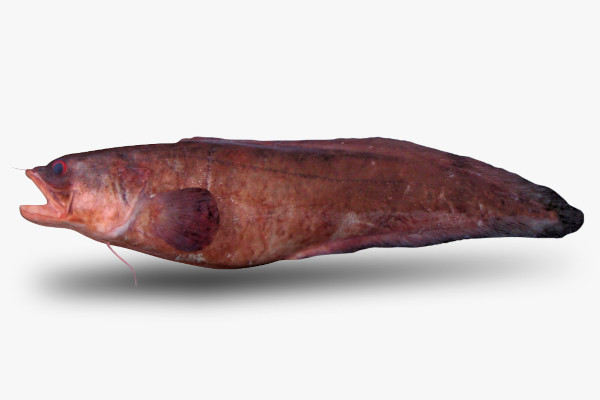
Why can’t a diver reach the bottom of the sea?
The main reason is the intense pressure on the ocean floor, which makes the environment very difficult to explore.
The air pressure that pushes down on our body at sea level is about one hundred thousand Newtons per square meter.
The anatomy of the human being is made to live comfortably in a terrestrial environment. This is due to its evolution under certain conditions, which makes us depend on oxygen.
The maximum you can reach is around 49 meters deep, approximately, during the dive.
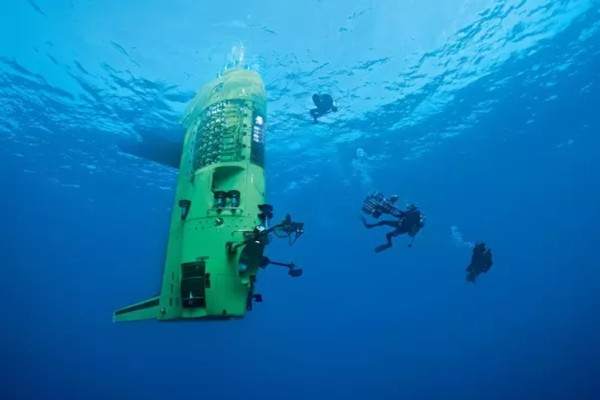
Conclusion
Delving into the profound mysteries of the ocean’s depths, the mesmerizing animation showcased in this article takes us on a captivating journey. From the awe-inspiring Mariana Trench to the enigmatic Challenger Deep, we’ve unraveled the secrets hidden beneath the waves.
Through exploration and cutting-edge technology, humanity continues to fathom the incredible depths of our planet’s oceans, revealing the resilience of life in even the harshest environments.
This exploration not only expands our knowledge but also emphasizes the importance of preserving these wonders, ensuring that the beauty and complexity of the deep ocean endure for generations to come.
References
- High-resolution multibeam sonar bathymetry of the deepest place in each ocean. Heather A. Stewart, Alan J. Jamieson. May 2021
